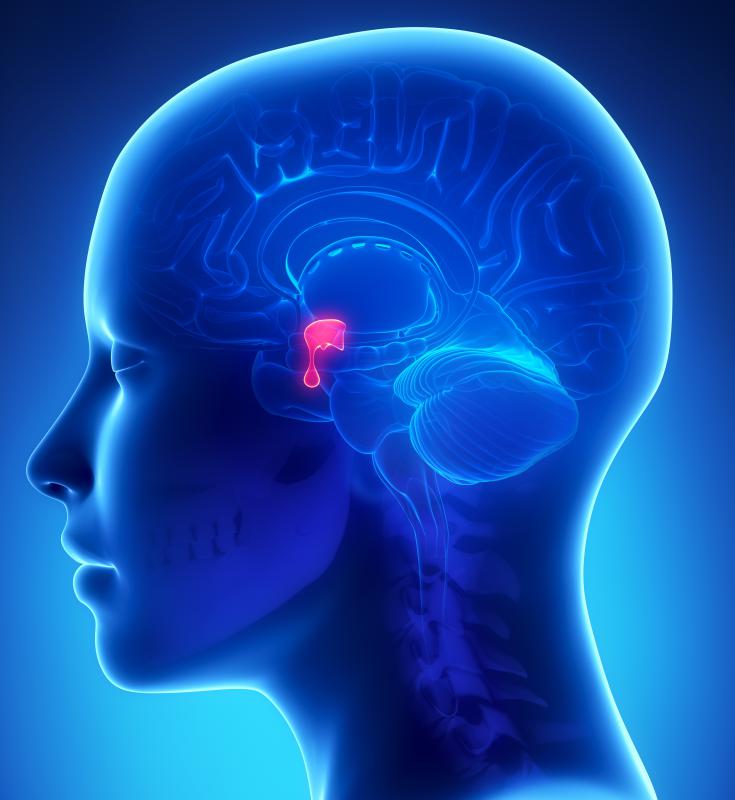At WiseGEEK, we're committed to delivering accurate, trustworthy information. Our expert-authored content is rigorously fact-checked and sourced from credible authorities. Discover how we uphold the highest standards in providing you with reliable knowledge.
What Is a Rathke's Cleft Cyst?
A Rathke's Cleft Cyst (RCC) is a fluid-filled cyst in the pituitary gland. The cyst forms in the cleft area left over from embryonic development. Although a Rathke's Cleft Cyst is not normally dangerous, the condition can sometimes cause eye problems, pituitary issues, or headaches.
When a baby forms in the womb from an embryo, at the 24th day of life, it has a pouch where the pituitary gland of the brain will be. This pouch is called Rathke's pouch. In most people, the pouch closes over when the brain is fully developed, but sometimes, the pouch does not close fully and remains as a cleft in the pituitary gland. This is Rathke's Cleft.
In the case of a Rathke's Cleft Cyst, the cleft becomes enlarged and fills with fluid. The proliferation of new cells is benign, and people with the condition are not at risk for cancerous spread. For most people, the cyst causes no problems at all.

Those people who experience medical problems from a Rathke's Cleft Cyst, however, may require surgery. The effects of a cyst can cause a deterioration in vision, headaches, and even a loss of function of the pituitary gland as a whole. The surgeon typically aims to remove all of the contents of the cyst but leaves the wall cells in place.
This is because these cells can have functional use in the pituitary. The surgeon can usually perform the removal operation through the nose instead of cutting through the skin. Certain cases, however, are present in an area of the pituitary that the surgeon cannot reach from the nose, and for these patients, the surgeon has to cut through the skull to reach the cyst.

In about nine out of ten people, the operation is successful at removing all of the cyst contents. Once the cyst is emptied, many of the symptoms may go away. In about ten percent of surgical patients, however, the cyst can recur sometime in the next decade. Rathke's Cleft Cyst removals are relatively common and make up about ten percent of all pituitary excisions.

Doctors often find cysts for the first time when a patient undergoes medical imaging scans. Although the cysts are relatively harmless, the pituitary gland may have other cyst-like diseases, such as adenoma, a benign tumor, which appear similar in the scan. Most often, the scans identify cysts in adults, but they can also be present in the pituitary glands of children.
AS FEATURED ON:
AS FEATURED ON:














Discuss this Article
Post your comments